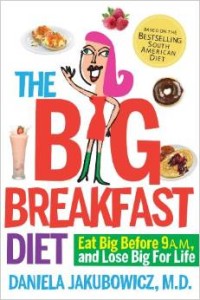The Skinny
Average Weight Loss: Varies
Type of Diet: Low-carb (“light” ketogenic), low-calorie (must buy their protein powder and supplements)
This diet may be unsafe for many individuals.*
About The Diet
 Follow a three-step plan to lose weight on this low-carb, (“light” ketogenic), low-calorie diet plan.
Follow a three-step plan to lose weight on this low-carb, (“light” ketogenic), low-calorie diet plan.
Step 1: Weight Loss. In this step you use ITG protein (purchased) as the basis for three meals of the four you are allowed each day. You stay on this step until you reach your goal weight. This means, you will strive to remain in benign dietary ketosis for the entire diet.
Step 2: Transition. After your reach your goal weight food is slowly reintroduced over the next four weeks.
Step 3: Success for Life. This really is not a step because you simply stay on Step 2. This step merely acknowledges you have settled on a way of eating in Step 2 that can keep the weight off long term.
There are three plans you can choose to follow:
ITG (Ketonic) Diet – This is a low-carb, low-calorie plan. Although the diet website states you will be in “light ketosis” in on this plan, you eat 40-60 grams of carbohydrates per day which may not be reduced enough to put some dieters into ketosis. You are only allowed 1,000 calories a day.
Optional Plan – This diet recognizes the some people may not be able to follow the ITG Diet plan and allows you more calories so you will lose weight a little slower.
Their protein products do come in gluten-free and soy-free formulas and support from coaches via email or phone. The average cost per meal (as of June 2015) is $3.15-$4.60 or just under $12 per day (you eat 3-4 of their meals per day.)
Supplements (mandatory) must be purchased through their website that will cost about $60 per month on top of meal proteins.
More Information
Negative Press
- Expensive
- Not a balanced diet and can be difficult to follow
Positive Press
- Good program support
** Provided for information only. This is not an ad but an excerpt from Amazon.com so you can read more about this book. **
ITG Diet (Minor Diets Series Book 4)
By Angela Benarmis
What’s The Greatest Diet? The ITG Plan, Of Course!
Everything you’ve Always Wanted to Know about Ketogenisis Based Diet Plans!
The ITG diet is more than just a fad diet. It’s a way of eating that helps you build a lifetime of good health, as well as learning all about nutrition. You’ll learn about food choice, your metabolism and your dietary needs. In short, it’s a holistic program that affects every part of your life.
The ITG diet is not a weeklong commitment but a lifetime one.
Unfortunately the ITG diet is not suitable for everyone. A full list is in the book but the most important ones are listed below:
-
Children under 17 (however children can use the foods as healthy snacks)
-
Cardiac problems within six months of starting the program
-
Drug/alcohol abuse with poor nutritional status
-
Severe liver disease – high liver enzymes
-
Pregnant women and nursing mothers
-
Depression with suicidal tendencies
This is because the Diet is a ketogenic weight loss plan. It burns fat with an imbalance between carbohydrates and proteins.
Each person who enrolls in the plan has their own coach who advises them on what to eat and develops an exercise plan.
The ITG diet moves you away from unhealthy processed foods such as potatoes, pasta and breads to much more healthy foods such as lean chicken and beef, fish, eggs, avocado, olive oil and coconut oil.
* Health Concerns
The ITG website specifically states not to try it if any of the following apply to you:
- Heart attack/acute unstable cardiac conditions/stroke/mini strokes (TIA) (within 6 months)
- Anyone with congestive heart failure
- Type one diabetic
- Active disease states
- Active cancers (less than 3 years cancer free or see physician for approval)
- Parkinson’s disease
- Acute inflammatory states (while in flare-up)
- Hepatitis
- Lupus flare
- Acute peptic ulcer disease (PUD)
- Bleeding ulcers
- Severe liver disease – high liver enzymes
- Severe kidney disease
- Unstable mental disorders
- Psychotic disorders
- Schizophrenia
- Bipolar disorder
- Depression with suicidal tendencies
- Anyone on lithium
- Drug/alcohol abuse with poor nutritional status
- Active eating disorders
- Anorexia
- Bulimia
- Phenylketonuria (PKU) – ability to properly break down an amino acid called phenylalanine
- Anyone with active HIV
- Seizure disorders
- Pregnant women and nursing mothers
- Children under 17 (however children can use the foods as healthy snacks)
- If on any of these medications must be working with their primary care physician
- Diuretics – (water pills) > 40 mg Lasix or equivalent per day
- Anticoagulant drug therapy – Coumadin, Warfin.




